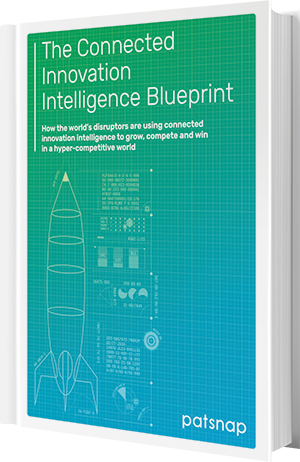
In this whitepaper, we explore what connected innovation intelligence is and how the world’s disruptors are using it to grow, compete and win in a hyper-competitive world
Get the whitepaperSuccessful innovation requires the big picture, so innovators have a need to connect traditional innovation data sources such as IP data with alternative data sources (such as tech blogs, investments/VC trends, market reports, grants and funding) to become more commercially aware and to make more impactful innovation decisions. However, with more data comes more noise. Innovators need connected innovation intelligence that brings together millions of innovation and IP datapoints, separates the signals in all that data from the noise, and then connects the dots to improve decision making.

Connecting market, commercial, and technology datapoints helps you spot the trends in new and adjacent markets, see where the money is being spent, and then use that insight to decide what direction your innovation strategy should take.

Analysis of patent data combined with non-IP data allows you to discover what competitors are researching and developing, monitor M&A activity, and identify trends they're following through patenting activity. This insight gives you the ability to differentiate and stay ahead.

Connected innovation intelligence harnesses machine learning and AI to do the heavy lifting, spotting the signals in the data minefield allowing you to get answers to your most strategic questions quickly and easily, reducing risk and cost of failure.
As more money is being poured into research and development every year, the pressure is on to produce a sustainable pipeline of viable innovations. Connected innovation intelligence is a crucial part of the IP and R&D toolkit. Connecting datasets and connecting teams, it helps innovators answer the biggest questions along the innovation lifecycle with confidence and ease. And when embraced into a company’s innovation workflow, it can ultimately be the difference between being disrupted and being the disruptor.
© 2020 PatSnap. All rights reserved.